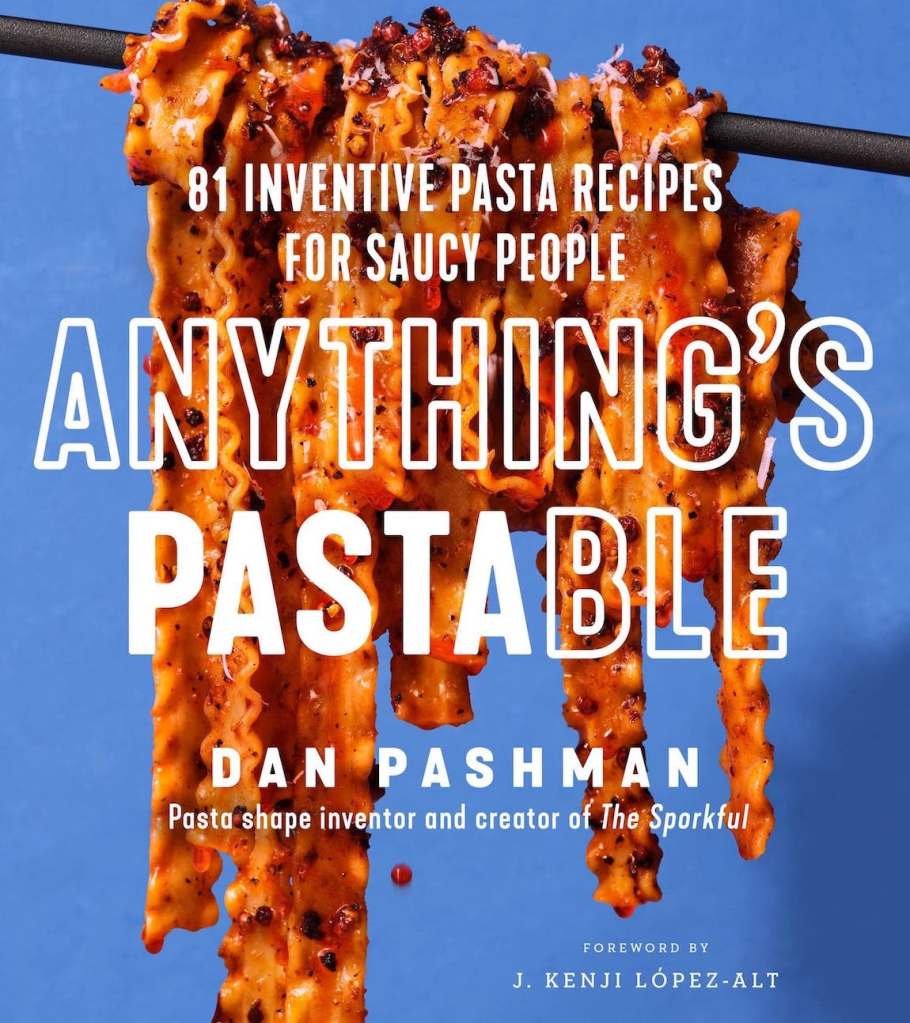“Sesame, Soy, Spice: 90 Asian-ish Vegan and Glute-free Recipes to Reconnect, Root, and Restore” is the first cookbook by Remy Morimoto Park, a health and wellness blogger based in NYC. She also comes with a Korean, Japanese, and Taiwanese background. According to the author/book, the recipes “are love letters to her family members, to the countries she’s lived in, and to her teenage self – the one who thought she had to reject the food of her culture to live authentically for herself.”

The chapters are listed as:
- First things first,
- Salads that don’t suck (and other delicious vegetables),
- Snacks that smile back,
- Crying over spilt soymilk,
- Long life noodles, rice, and other mains,
- More things my family members, who never measure anything, like to make,
- You deserve it
At first glance, I was confused by the title “crying over spilled milk” but that chapter talks about the heavy topic of substance abuse at a young age, and turning to sobriety. It then offers recipes for alcohol-free drinks.
Some recipes that I think sound good are:
- Just-add-mylk pancake mix,
- Miso-glazed mushroom toast,
- Vegan cream cheese,
- Smoky maple tempeh bacon,
- Matcha and pistachio granola,
- Crunchy togarashi asparagus,
- Scallion pesto,
- Korean bbq-loaded nachos,
- Perfect pistachio milk,
- Pistachio milk matcha with cheesecake cream,
- Black sesame cacao smoothie,
- Cucumber sesame noodles,
- Shredded Korean bbq bulgogi tofu,
- Spicy peanut ramen,
- Thai basil tempeh,
- Popcorn tofu,
- Chinese peanut cookies,
- Thai tea panna cotta,
- Miso caramel creme brulee,
- Black sesame chocolate chip bliss balls,
- Miso butter chocolate chip cookies
My only real criticism of the book is that not all of the recipes are “Asian-ish” which is what I was expecting based on the title. The recipes I highlighted above are but there’s also recipes like “snap pea slaw” and “quinoa salad with raspberry poppyseed dressing” which really are not. (You can make the raspberry poppyseed dressing more Asian inspired by adding gochujang but that’s listed as an optional ingredient.) It’s only when you read the inside jacket that it says “elegant, easy-to-make plant-based takes on Asian-ish and international dishes.”
The first recipe I made is not Asian in any way, but sounds delicious: chocolate quinoa breakfast bowl. It’s made with quinoa, water, plant milk, maple syrup, cacao powder, almond butter, vanilla, and topped with fruits/nuts of choosing. It’s pretty easy to make but take more time than you might think. You first cook the quinoa in water for 10-12 minutes, and then finish cooking it in the plant milk for another 7-8 minutes. My recommendation is to use less plant milk to start than what is listed. I used an oatmilk brand that I had never used before, and it was very thin. I used the full amount, and my final results were more watery than what the book photo presents. It does thicken up if you store leftovers in the fridge, but my oatmilk was so thin that it still felt too watery to me the next day. Admittedly, I made this recipe because One Degree Organic Foods’ Organic Sprouted Oat Granola Quinoa Cacao is one of my favorite snacks. They are very different chocolate quinoa recipes. The porridge here is more bittersweet, and the quinoa flavor is more pronounced. That doesn’t mean that I think it’s bad or anything. It’s just different. The porridge is also very filling. The recipe says it’s for 2 servings, but with nuts and fruits (and a serving of yogurt which I have every morning), I was able to stretch this into 5 servings. This a great option for meal prepping.
The second recipe I made also came from the same chapter but I ate them for lunch: super scallion quiche cups. It’s inspired by egg bites and scallion pancakes. It’s made with oil, leeks, scallions, extra firm tofu, nutritional yeast, cornstarch, plant milk, miso, onion powder, and garlic powder. Essentially, these all get blended together to make the quiche batter. The recipe was written for a 24 mini muffin tin, but I used a standard 12 cup muffin tin. The recipe says to blend until spoonable but not too runny. I took that mean a hummus like consistency which was a pain in the butt to scoop out of my blender as I got closer to the blades. I think I will try this in a food processor next time. This is also a great meal prep item, especially if you’re on the go. Overall I enjoyed this, but I think I can add more scallions, nutritional yeast, miso, and onion/garlic powders. The tofu can take it. Otherwise, it might be fun to garnish with a flavored schmear of choice.
The book has a fun array of vegan recipes. I think this book will appeal to anyone new to veganism, long-time vegans looking for new ideas, or anyone looking for recipes to increase their vegetable consumption. Just don’t get this book for you’re expecting Asian inspired recipes only.
Disclaimer – I kindly received a copy of this book from William Morrow/Harper Collins for this review. I’m not getting paid for this post. The views and opinions expressed are purely my own. This cookbook is available for purchase from your favorite bookshops.
Reference Links:
https://www.instagram.com/veggiekins/?hl=en
https://www.harpercollins.com/blogs/authors/remy-morimoto-park-84771








